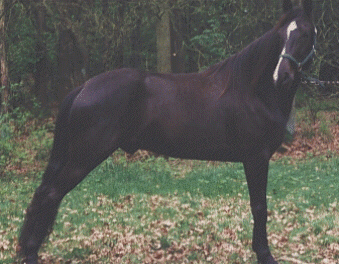What do you do if you encounter a rattlesnake? What if you’re bit? I asked Judith A. Alsop of Poison Control these questions and more.
Q: What type of toxic substance does a rattlesnake emit when it bites, and how does this poison affect a person physically and mentally?
Rattlesnake venom is a complex combination of substances used by rattlesnakes to capture prey. The venom has components that paralyze the prey so it cannot run too far away where the snake cannot find it. The venom also contains substances that help break down the tissues (start to digest) the prey so it will be easier to swallow. There are also substances that cause bleeding and tissue break-down, and those are the ones that cause the problems at the bite site in humans, as well as animals. The wound usually has a great deal of swelling at the site, with bruising of surrounding tissues, pain, and oozing of blood. Mentally, most patients are more affected by the fear that they have been bitten than by the snake venom itself. However, the Mojave rattlesnake venom contains a neurotoxin that can cause paralysis in large doses.
Q: What should people do if they come upon a rattlesnake?
I always say, “Snakes have the right of way!” Leave the snake alone. Walk the other way. Walk around the snake. Do not surprise a snake if it is resting. Do not touch it or tease it. Do not attempt to pick it up or make it move. Do not try to kill it. If it is rattling, it is warning you to back off. If it is not rattling, it either does not know you are there or it is has somehow lost its rattles. Trying to move rattlesnakes is a sure way to tempt fate and get bitten. If the snake is on your property, call animal control. They probably will not remove it, but they might be able to give you the name of someone who is a professional snake wrangler.
Q: What should people do if they are just bitten by a rattlesnake?
Be calm, if possible. Either call 9-1-1 or if you can drive, get in the car and go to the emergency room but drive safely. Anything you might think to do would waste precious time. The most important item to have with you is a cell phone or two-way radios to contact emergency help if you are out in more remote areas.
Q: It used to be said that when a person is bit, you put on a tourniquet, make cuts around the wound, and suck the venom out. Is that still true today? How about icing the bite?
No! No to tourniquets, no to ice, no to cutting and sucking! Doing these things wastes time that would be better spent going to the emergency room. These things are also potentially dangerous. Most people do not know how to apply or use a tourniquet. A tourniquet left on too long will cut off the arterial blood supply, which can result in gangrene leading to a possible amputation.
People definitely do not know how to do the “cut-and-suck” method. Do they cut across or lengthwise? How deep should the cuts be? Cutting can result in cases where tendons, arteries, and nerves can be cut, resulting in more damage to the patient than just the bite itself. The human mouth is filled with bad bacteria that can cause a more severe infection in the wound. Cut-and-suck does not remove significant amounts of venom, but it can seriously injure the patient. Ice is not recommended either. Finding the ice takes time. Using too much ice for too long can result in frost bite. Soaking the bitten area in ice water for long periods of time can also slow down or stop blood flow which can result in gangrene followed by amputation.
Q: What kind of medical care is typically given to a person who has been bitten by a rattlesnake?
Once the patient is in the emergency room, intravenous lines are started. The wound is then cleaned and antivenom will be administered intravenously, if the symptoms are severe enough. Blood is drawn to see if there has been an effect on the ability of the blood to clot.
Antivenom is given until the symptoms begin decreasing or are stopping. Swelling of the tissues surrounding the bite area can be significant. In almost all cases, the patient will be admitted to the hospital for further monitoring of lab values and for the administration of more antivenom. Patients who are properly treated are usually expected to survive.
Q: What are things people can do to prevent snake bites?
Most of the things people can do to prevent snake bites are common sense.
• If you see a snake, leave it alone.
Teach children to leave snakes alone.
• Give snakes the right of way, go the other direction.
• Wear good leather boots when hiking or working in snake country.
• Use a long walking stick when hiking or walking in snake country. If you surprise or disturb a snake, it can strike at the stick and not your feet or legs.
• Do not pick up rocks and firewood without first looking for snakes. If it appears safe, wear leather gloves just in case.
• Always poke around an area with a long stick before putting your hands where your eyes cannot see. • Remember that snakes can climb and swim.
• Don’t tease or play with snakes.
Q: Are bites from young rattlesnake really more serious than ones from older snakes?
This is complicated and controversial. Rattlesnakes hunt for prey by using heat-sensing pits — hence the name, “pit vipers.” The larger the prey, the more heat it gives off, so the snake can more or less judge the size of the prey. And, the larger the prey, the more venom the snake needs to inject into it in order to bring it down.
The severity of a bite is due to the amount of venom injected, not the size of the snake. Larger snakes have more venom than smaller snakes, so larger snakes have the potential to cause more severe bites due to the greater amount of venom that can be injected into the wound. But rattlesnakes also have the ability to control the amount of venom they inject into their prey. Larger, older snakes have more “experience” controlling doses of venom that young snake probably do not have. It is thought that young snakes inject all of their venom at a time, whereas it is thought that older, larger snakes know to save some of their venom for future reserve.
There was also a study done testing the amount of venom injected into the same size prey by large and small rattlesnakes. Smaller snakes injected more venom than the larger snakes, even though the large snakes had more venom to inject. It is thought that the prey simply appears larger to the smaller snakes so they inject more venom to make sure they bring it down.
Q: Who are typical snake-bite victims?
The most common victim of snake bite is a young man in his 20s who has been drinking and decides to purposefully handle a snake. Alcohol and snakes are a dangerous combination and do not mix! If you are drinking and see a snake, don’t be macho, don’t be brave—leave the snake alone — or you could suffer the consequences.
Each year many elderly people in their 70s and 80s are bitten by rattlesnakes, usually on their hands. Most of the bites in this age group are from doing yard work or gardening. Older people do not see and hear as well, so they may miss signs of snakes in the area. Again, poke the area with a long stick to see if snakes are present before putting bare hands in weeds and shrubs and wear leather gloves.
Judith A. Alsop, PharmD, DABAT, is director of the Sacramento Division of the California Poison Control System. You can e-mail her at jalsop@calpoison.org.
I WAS BIT BY A RATTLESNAKE!
by Deni Whiting
I threw my sandals on that night last summer because I was just going next door to feed my neighbor Jan’s horses. I was wearing shorts. No cell phone. No flashlight. I go out all the time like that at night to my own barn to feed, even though I’m aware that snakes are out.
When I got to Jan’s, I went to grab a couple of bales of hay. Out of nowhere, there was this, “Bam!” No rattle, no noise, no nothing. I was trying to figure out what happened. And then I heard the “trrrrrrrrrrrr” sound. I looked at my foot and saw two little marks, nothing significant at all. And I just kind of went, “I think I just might have gotten bit.” But I couldn’t see where it was. I picked up a wheelbarrow and threw it on the spot where I’d heard the sound. I still couldn’t see it. And when I heard, “trrrrrrrrrrrrr!” again, I was hoping I’d trapped it for someone to kill later.
So then I thought, “I can’t stay here.” That’s because I sometimes go out and talk to my neighbors for an hour or so and my husband Scott wouldn’t think anything of it if I didn’t get back for a while. I also thought that maybe I really wasn’t bitten. Or maybe it was a dry bite [without venom], since I’d heard that 50 percent are dry bites. Or, just maybe, it was only a warning bite.
I started heading home, not running, but I was going pretty fast. By the time I took about 20 steps, I felt a tingling in my face. I ran into the apartment we have in our barn and told the girl, Chris, who lives there that I’d been bitten and that the horses had not been fed yet. My body had started to feel so weird, that I wanted to tell her in case for some reason I didn’t get home.
When I got home, my husband Scott was watching TV. “Scott, we need to go to the hospital,” I told him, trying to sound calm. “I’ve been bit by a rattlesnake.” He went flying out of his chair, grabbed the phone, dialed 9-1-1, and started talking to a dispatch lady. And then things just started going for me. It felt like I was standing on or holding onto a really hot electrical wire, and I couldn’t get off of it. “Scott, we don’t have time,” I told him. “We have to go now.”
We got in the car, and Scott drove at least 80 miles per hour. “Can you drive any faster?” I asked because things were just changing for me, really goofy stuff. My toes were wiggling, but I wasn’t doing it. I was talking weird, like my tongue didn’t work right. Scott said I also had my head hanging out the window. I don’t know why, and I don’t remember doing that.
When we were near a fire station, I told Scott we needed to stop there. I wasn’t sure I was going to make it. He called 9-1-1 and told them we were stopping at the fire station, and we probably needed an ambulance. He also told the lady, “I’m going through two red lights, OK?” And she said, “Go through them.” And he did. He wanted her permission to break the law. [She laughs.]
So we got to the fire station, and that made me feel a lot better because I was with medical personnel — except, they were so calm. It made me feel like I must be really bad off. The whole time, my body was moving around. I don’t know if I was physically moving, but it felt like I was. And my foot was starting to swell. They said to put my foot above my heart. And they started me on IV fluids and a heart monitor. Finally, the ambulance came and took me to the hospital.
At the hospital, they took a chest X-Ray and took my vitals. The whole time, I felt really weird. It was just an intense fuzzing. I got really yellow, probably from the venom going through my liver. All of my bodily functions seemed to go. A snake wants its prey to be empty. I also kept babbling on. When they signed me into the hospital, I couldn’t hold the pen.
I kept wondering where the shot for the antivenom was. My perception was I’d get a shot and then go home. I kept asking them, “Where is it? Where is it?” I wanted them to hurry up because I was feeling so bad. Finally, they said, “Well, it takes a while.” They said it can take anywhere from two to eight hours.
One thing that was happening was that my foot was swelling so much I remember saying to the nurse, “Have you ever had a foot burst?” She said, “Oh, honey, you don’t worry about it. If that happens, we’ll take care of it.” Well, apparently, that does happen, so they cut it.
Finally, I got the antivenom. They gave me six vials at a time by IV. They kept giving it to me until the symptoms went away enough so they could get me out of emergency.
Around 5:00 in the morning, they sent me up to ICU. I felt much better by then. In the end, I got sixty vials of antivenom.
What is antivenom?
Antivenom (also called antivenin) is used to treat venomous snake bites. It is created by injecting a small amount of snake venom into an animal, such as a sheep. The animal’s body creates antibodies against the venom in its blood. These antibodies are taken from the blood and freeze-dried to make the antivenom. Usually, one type of antivenom contains a mixture of antibodies from several different types of poisonous snakes. The particular type of anti-venom that Deni got is called CroFab, which is used to treat venomous bites from rattlesnakes, cottonmouths, and copperheads.
If antivenom is used right away on a snake-bite victim, it prevents further damage to the person’s body. It doesn’t, however, reverse any damage that has already occurred.
Is a snake poisonous or venomous?
• Poison is a substance that is absorbed into your skin or through your digestive system. A poisonous plant or animal typically has the poison distributed over its exterior surface or skin. If you touch or eat the plant or animal, you can be poisoned. A well-known poisonous plant is poison oak.
• Venom is a toxic substance that is injected directly into your body, such as into tissue or the bloodstream. The venomous plant or animal has a specialized organ for injecting the venom into its victims. If the mechanism comes in direct contact with you, you can become infected. Bees are venomous. So are rattlesnakes.






